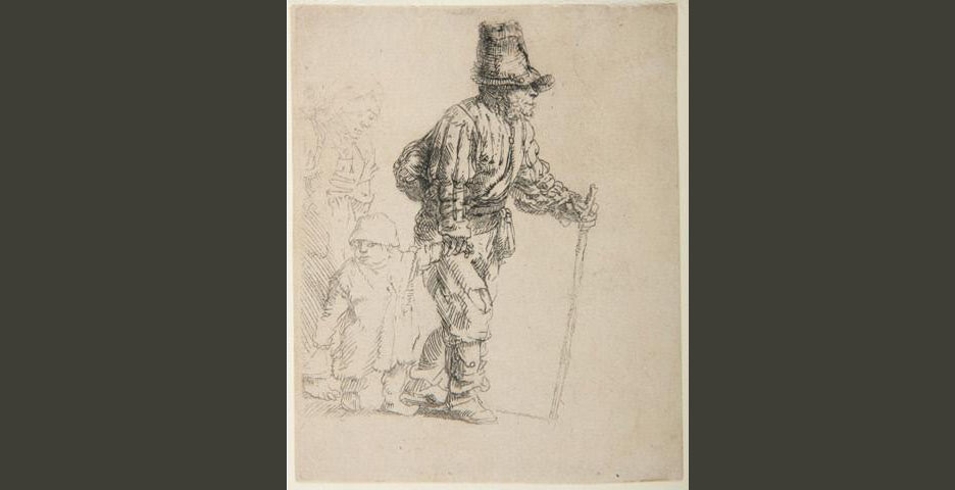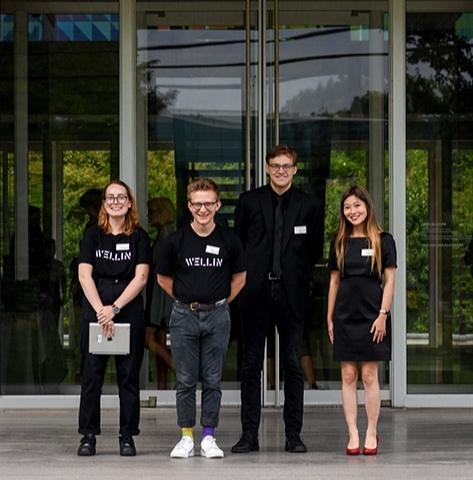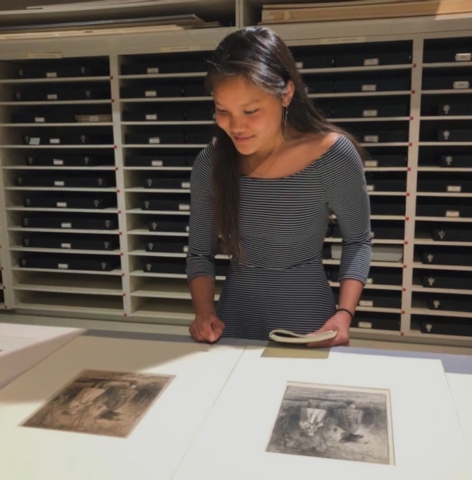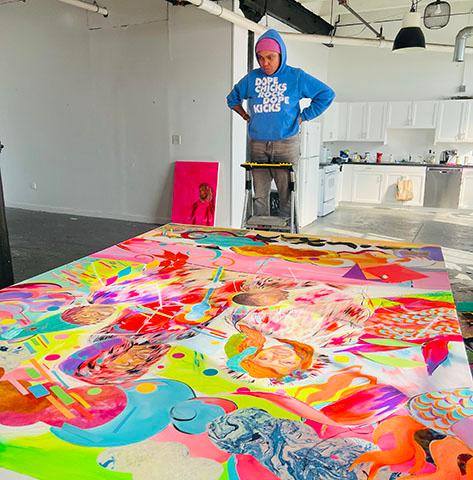
This fall, in the Wellin’s response to the pandemic, a variety of projects were made available for docents to work on in order to help engage museum visitors virtually. My group, which included my co-workers Maddie Hurtgen and Checca Parson, decided to create a Wellin Focus Tour. When I was told we could educate people about any artwork in the museum’s collection, I was excited to bring up Peasant Family on the Tramp because of my experience researching it in 2018 during my Introduction to Art History with Professor John McEnroe. New to the discipline, I was inspired to get a handle on the research process and dove into the project wholeheartedly. I discovered a lot about Rembrandt’s perspective as an artist and the intaglio printing process, and learned about the three states of this print. At first confusing, the idea of a “state” is relatively simple. When a copper printing plate is worn down after frequent use, people would re-etch the plates to prolong their use, often after the artist’s death. Each time the plate is re-etched, the prints from that new plate are determined to be of a new state. The Peasant Family on the Tramp plate was re-etched twice, and thus there are three states. There are slight differences to the prints that are made with the refurbished plate and scholars use those details to identify what state a certain print is from. Most importantly to the Wellin, I learned that the museum didn’t have information on what state our print is from. Because there are a large number of prints taken from the Peasant Family plate, there really was no way for me to find information on what state our print was from other than looking at it. For the purposes of my freshman year paper, I downloaded images of the prints and looked closely, but with untrained eyes could only make guesses as to what details indicated at the print’s state. I determined it was not a first state and thus had been edited by someone other than Rembrandt, but I concluded my paper with an estimate that it was of the second or third state. The unanswered question was left lingering in my mind.
Although the research I had done two years prior was fairly extensive, it felt unfinished because I had never found a definitive answer to what state our print belonged to. From my previous research, I knew I had to get my hands on a copy of the New Hollstein Dutch & Flemish Engravings, an extensive catalogue produced by experts at the Rijksmuseum in Amsterdam. Inter-library loan wasn’t an option because so many colleges are closed, so Marjorie Johnson, the Wellin’s Museum Educator and Docent Program Supervisor, connected me with a few scholars, including Brooks Rich, the Associate Curator of Old Master Prints at the National Gallery of Art in Washington, D.C. A fruitful conversation with Dr. Rich provided me with photocopies of the New Hollstein pages I would need, and a recommendation to reach out to Dr. Erik Hinterding, the Curator of Prints at the Rijksmuseum, one of the authors of the New Hollstein, and the leading expert in this field. Dr. Rich said he might be able to merely look at an image of the print and because of his extensive experience determine its state. It felt like a long shot, but I sent an email to Dr. Hinterding and to the Rijksmuseum’s inquiry account. Within the week, I received a message back from them with Dr. Hinterding’s determination that the Wellin’s print was of the second state. This result was exciting to my group and the Wellin staff. Through reaching out to other art historians, I was able to gain insight into the history of one of the Wellin’s objects. This project helped me realize how, while research is oftentimes spending a couple hours on Jstor on my own, it eventually is a collaborative process that even the most seemingly-elusive scholars are willing to help with.







